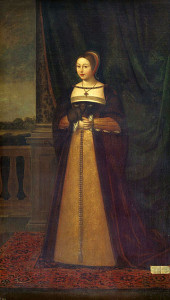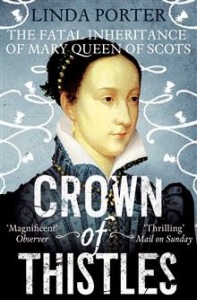You know it’ll all end well when that’s how I open a post. I saw a tweet today that featured a portrait of James VI/I of Scotland and England. While that is all well and good, and I am very glad that he got a bit of publicity today, the author of the tweet continued on that it was he who first thought to bring the two nations together under one monarch.
James was particularly fond of the idea of a “Great Britain,” and while he did unite the two nations (of course along with Wales and Ireland) under one crown when he ascended the throne of England in 1603, he was not the first monarch of the Isle to take action with that end goal in mind. The ascendancy of the Stewarts was the inverse of the fortunes of the Tudors, whose last monarch, Elizabeth, passed her crown on to James. The first Tudor king, though, Henry VII, also held dear the dream of a united kingdom of Great Britain. Why else, would one imagine, he marry his eldest daughter, Margaret, not to the French, the Spanish, or a German prince, but to the Scottish King? Any of their future children would carry the blood of both the Tudors and the Stewarts, bringing the two dynasties an intimate connection which later came to fruition with James VI.
Without the ambition of Henry VII, there would not have been a Stewart claim to the English throne, or at least as legitimate as the one James possessed through his descent from Margaret Tudor.
Of course, there had been marriages between the royal families of Scotland and England before, such as the marriage of Joan Beaufort and James I, but she was not the daughter of a ruling monarch, she was only his half-niece. She did, however, have royal blood and was a descendant of Edward III through her father’s line. Another example of the English royals marrying into the Scottish ruling family occurred much earlier, with the marriage of Joan of the Tower, the youngest daughter of Edward II and Isabella of France to David II of Scotland (the House of Bruce). Margaret of England, daughter of Henry III and Eleanor of Provence, married into the Scottish royal family by her marriage to Alexander III. Joan, a daughter of John of England, married Alexander II. I could go on, but the point is adequately made.
Marrying into the Scottish royal family wasn’t a new idea in by Henry VII’s time, actually, it seems to have been almost a traditional practice (especially if one had a daughter named Joan!). Henry VII, though, hoped to have Scotland under his thumb more directly by having his eldest daughter marry her King, whereas most of the aforementioned marriages were between Scottish monarchs and younger daughters of English monarchs. In an interesting turn of events, it was not Scotland under England’s rule, but England under the rule of a Scottish king that brought together the two nations in a more peaceful manner than had been experienced previously. The Wars of Scottish Independence had, for a time, brought both nations together, but in a forcible manner, unlike that which passed under James VI.
This is particularly important to remember, especially tonight, when the Scottish people are voting in the largest referendum to date in their history. Scotland has a proud and vibrant history, and it is because of that history that the citizens of Scotland are voting tonight.
I cannot make any claim as to how I want to see this turn out. I certainly have my own opinions, but it is up to the Scots, tonight, to decide for themselves. I just hope that they remember how it wouldn’t have been the United Kingdom without a Scottish monarch to bring it all together (even if it had been an aim of the English monarchs for centuries before it actually happened).



